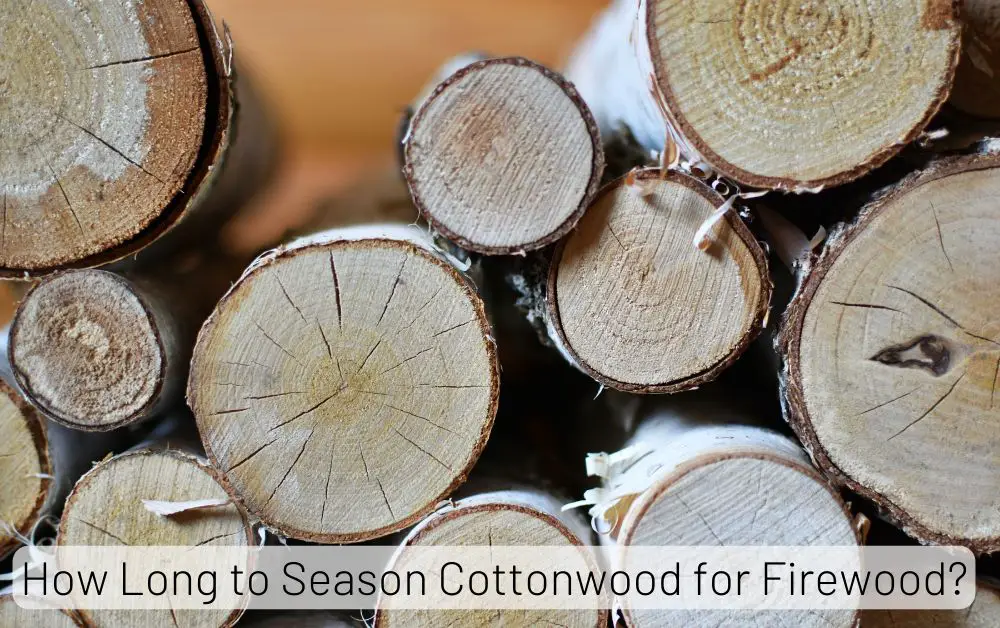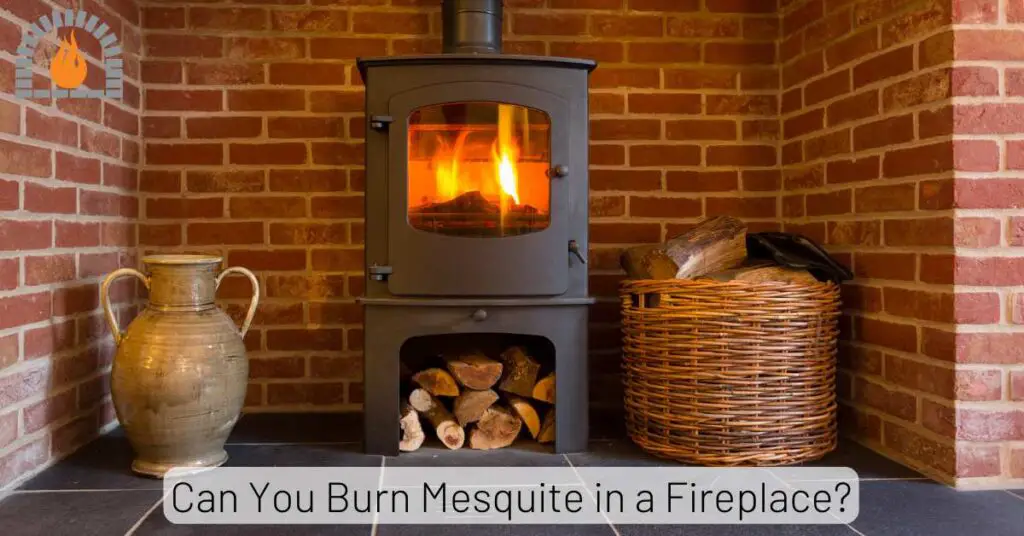Sycamore wood comes from the sycamore tree, known for its distinct mottled bark and large, hand-shaped leaves. The wood is light, often featuring a creamy white to light brown hue. But can you burn sycamore wood?
Overview
Sycamore wood burns with a moderate heat output, making it suitable for various heating needs. Its flames dance gracefully, providing a visually appealing and calming ambiance. However, it’s essential to note that sycamore may burn faster than denser hardwoods.
Sure, I can provide you with a general overview of Sycamore Wood as firewood based on common characteristics. Keep in mind that specific properties may vary depending on the particular tree and the region it’s grown in.
| Property | Sycamore Wood |
|---|---|
| BTU (British Thermal Units) | 19.1 million BTUs per cord |
| Nature | Hardwood |
| Sparking Nature | Low |
| Smoking Nature | Low |
| Ease of Splitting | Moderate |
| Ease of Seasoning | Good |
| Coaling Density | High |
| Ashing Density | Moderate |
Can You Burn Sycamore Wood?
Yes, sycamore wood can be burned as firewood. Sycamore has 19.1 million BTUs per cord, burns well, and produces a good amount of heat. Properly seasoned sycamore with a moisture content of around 20% is ideal for burning.
It’s important to ensure that the wood is properly seasoned, meaning it has been allowed to dry for an adequate period. Seasoned wood burns more efficiently and produces less smoke.
While sycamore wood is generally safe to burn, adhering to standard fireplace safety precautions is essential. Regular chimney maintenance, using a spark screen, and ensuring proper ventilation are crucial elements of safe wood burning.
Pros of Sycamore Wood as Firewood
- Good Heat Output: Sycamore wood has a relatively high BTU (British Thermal Unit) content, providing a good amount of heat when burned.
- Burns Well: Sycamore wood tends to burn well, producing a consistent and steady flame.
- Readily Available: Sycamore trees are commonly found in various regions, making the wood relatively easy to obtain.
- Decent Coaling Properties: Sycamore wood creates a bed of hot coals, which can help maintain a fire for a longer duration.
- Versatile: Sycamore wood can be used in various heating appliances, including fireplaces, wood stoves, and outdoor fire pits.
Cons of Sycamore Wood as Firewood
- Moisture Content: Sycamore wood should be correctly seasoned, as it can have a higher moisture content when freshly cut. Burning wet or unseasoned wood can result in inefficient combustion and increased creosote buildup.
- Not as Durable as Hardwoods: Sycamore is considered a hardwood. However, it may not be as dense or durable as some other hardwoods, which could affect its overall longevity as firewood.
- Potential for Rapid Decay: If the wood is not stored correctly, sycamore can be susceptible to decay or fungal growth, reducing its quality as firewood.
- May Produce More Ash: While the wood burns well, sycamore may produce more ash than other hardwoods. This means more frequent ash clean-up may be necessary.
- Variable Quality: The quality of sycamore wood can vary, so it’s essential to source well-seasoned wood from a reliable supplier to ensure optimal burning performance.
Aroma and Smoke
One of the highlights of burning sycamore wood is the pleasant aroma it releases. The subtle, sweet fragrance adds to the overall enjoyment of the fireplace experience.
Sycamore wood produces minimal smoke when properly seasoned, contributing to a cleaner burn.
Preparing Sycamore Wood for Burning
To optimize the burning experience, it’s crucial to prepare sycamore wood properly. Ensure the wood is well-seasoned, cut into manageable lengths, and stored in a dry place.
This preparation enhances the wood’s combustibility and minimizes the production of creosote, a byproduct of incomplete combustion.
For a customized burning experience, consider mixing sycamore wood with other hardwoods. Combining it with denser woods like oak or hickory can balance the burn rate and prolong the warmth generated by the fireplace.
How to Season Sycamore Wood for Optimal Burning Efficiency.
Sycamore wood is commonly used for firewood, and seasoning it properly is essential for optimal burning efficiency. Seasoning wood involves drying it out to reduce moisture content, which enhances combustion and minimizes smoke production. Here’s a step-by-step guide on how to season sycamore wood:
- Split the Wood:
- Split the wood into smaller pieces to enhance the surface area and expedite drying.
- Aim for pieces with a 3 to 6-inch diameter for optimal drying.
- Stacking:
- Create a well-ventilated woodpile or stack. Elevate the wood off the ground to prevent moisture absorption from the soil.
- Use a crisscross pattern when stacking the wood to allow air circulation between the pieces.
- Cover the Stack:
- Cover the top of the woodpile with a waterproof tarp or metal roof to protect it from rain and snow. Ensure that the sides remain open for air circulation.
- Choose a Sunny and Windy Location:
- Place the woodpile in an area that receives ample sunlight and is exposed to the wind. The combination of sun and wind helps accelerate the drying process.
- Monitor Moisture Content:
- Consider acquiring a moisture meter to assess the moisture content of the wood. Sycamore wood is best burned when its moisture content is below 20%.
- Regularly check a few split pieces from the pile’s center to ensure they dry uniformly.
- Allow Sufficient Drying Time:
- Sycamore wood usually takes about 6-12 months to season properly, depending on factors such as climate, size of the wood pieces, and initial moisture content.
- Store Properly:
- Once the wood is adequately seasoned, store it in a dry place to prevent it from reabsorbing moisture.
Related Post: Is Poplar Good Firewood?
Is Sycamore A Hardwood?
Yes, Sycamore is classified as a hardwood. Scientifically known as Acer pseudoplatanus, it belongs to the maple family and is valued for its dense and durable wood. Sycamore trees are deciduous and produce broad leaves, characteristic of hardwood species.
The wood is commonly used in various applications due to its hardness, strength, and attractive grain patterns.
Is Sycamore Wood Good For Anything?
Sycamore wood is versatile and finds application in various woodworking projects. Its moderate density and straight grain suit furniture, cabinets, and flooring. Woodworkers appreciate its workability, as it can be easily machined, stained, and finished.
Due to its smooth texture, Sycamore wood is utilized for veneer, turning, and carving. While not as famous as some hardwoods, Sycamore is prized for its affordability and availability.
Its pale color also makes it adaptable for staining or painting, allowing various aesthetic options in different projects.
Final Thoughts: Can You Burn Sycamore Wood?
In conclusion, sycamore wood can be burned for a cozy fireplace experience, offering a unique blend of visual appeal, pleasant aroma, and moderate heat output.
By understanding its characteristics and following proper preparation and safety measures, you can enjoy the warmth and ambiance that sycamore wood brings to your home.
Experimenting with different wood combinations allows you to tailor the burning experience to your preferences.
Affiliate Disclosure: Fireplaceadviser.com is a participant in the Amazon Services LLC Associates Program. We may earn a commission when you click on certain links on this site and purchase.

Hello!! I am Jamal Khan. I often fix my home electric heaters and gas stove problems and research the common issues in the heating units to improve my knowledge and expertise. The aim of establishing fireplaceadviser.com is to share my expertise and knowledge with my audience.


















